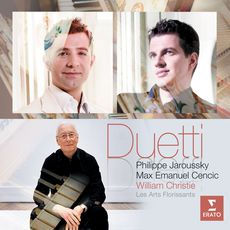The rivalry between Handel and Porpora was as brief as it was intense. It was the volcanic climax of a series of society scandals, explosions of hate between divas: in short all manner of excesses which transformed the London opera stage into a minefield.
Let's start at the beginning... Handel had just spent three years in Rome, punctuating his stay with forays across Italy, when he decided to move to London. The English capital was on the rise, both politically and in terms of maritime commerce. In 1701, the Act of Settlement proclaimed Queen Anne's succession to the throne: in order to marginalise Catholic pretenders, James I's granddaughter, the Protestant Elector of Hanover, was selected; another Hanoverian, George of Brunswick-Lüneburg would succeed to the British throne some years later. In 1710, after his experiences in Italy, Handel had become the Kapellmeister, or official musician, to the court of Hanover, from where he would escape from time to time, seeking refuge from his woes in England. When, in 1714, his master was crowned George I in Westminster, the musician breathed a sigh of relief: at last, he could move to London permanently.
In the early 18th century, London was a sprawling metropolis, teeming with life, a vast city which was modern and progressive, and above all... free, free of the conventions and shackles which bound the rest of the Old World. The wealth of the new colonies heaped the city with luxuries and curiosities. Strange and exotic things were all the range: there was a craze for tea, sugar, coffee, porcelain, spices, and... Italians - the latest exotic commodity to come onto the luxury market - whose opera was adored with a passion. The upper class were crazy for it! This nascent consumer society leapt upon fashionable novelties, upon the "latest thing", like a child determined to gorge himself on chocolates he knows will make him sick... An anecdote illustrates the madness of the times: Queen Henrietta Maria, consort of Charles I, was tremendously taken with her dwarf, Jeffrey Hudson. This whim of the Queen's brought on a collective hysteria among the ladies of the court: each one of them simply had to have a dwarf as a pet. The price of dwarves skyrocketed: as supply dwindled, they had to be imported...
What fashion wants, fashion gets: the latest thing, right now, money was no object! After finishing their studies, young English lords would make for the continent, setting out on what was known as "the Grand Tour". Italy - and in particular the Eternal City - was the main destination. They weren't there for the pizza, the pasta, or the suntan: back then, an Italian adventure was all about discovering the masterpieces of the Renaissance and Baroque; and, if the opportunity arose, swiping a palace off an impecunious Italian aristocrat. In painting, veduta was in vogue: enthusiasts were gobbling up these minutely-detailed representations of urban landscapes of Venice, Rome or Florence sketched by the Venetian painter Canaletto, who was swiftly becoming the pin-up for a whole generation of British nobles, who deluged him with orders. Anything that wasn't nailed down would be snapped up by frantic shoppers - Roman statues, Etruscan vases, pictures by Michelangelo - nothing escaped the mania for collecting, which reached a crescendo whenever a Rubens turned up. Trade with the colonies made England very rich, and tourists would totter around Rome or Naples rather as they do today on Oxford Street: "Let's see... these Gucci shades... or that Louis Vuitton - what do you think, darling? You know, I am just so torn between this Canaletto... and that Rubens, which one shall it be, amore? Well, we must take that singer home, he would be just perfect for the salon, wouldn't you say? "
These comparisons help us to understand the circumstances of artists of the day: then as now, they were at the mercy of fashion. For as long as they had a certain exotic appeal, punters would fight over tickets; but when tastes changed, and when their efforts lost their sparkle, audiences would simply move onto the next thing. Art then just didn't have the institutional weight, or inspire the reverence, that it does today. It was just there to serve as a pastime and to signal to the world that a given patron was cultivated: much of the public had absolutely no regard for the artistic merit or aesthetic quality of a given piece. Anyway, Handel accepted the challenge: with his music, he would set audiences' hearts alight, even if most of them were musical ignoramuses.
Create a free account to keep reading






